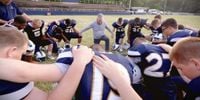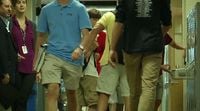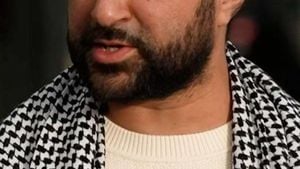President Donald Trump has reignited one of America’s oldest debates—prayer in public schools—by announcing a sweeping new initiative aimed at protecting what he describes as the “right to prayer” for students nationwide. On Monday, September 8, 2025, at the Museum of the Bible in Washington, DC, Trump declared that the Department of Education would soon issue guidance designed to offer what he called “total protection” for prayer in public schools. This move, fulfilling a 2024 campaign promise to “bring back prayer,” has sparked both celebration and alarm across the political and religious spectrum.
“We’re defending our rights and restoring our identity as a nation under God,” Trump told attendees—an audience comprised almost exclusively of Christian speakers and supporters, according to coverage by NBC News and Common Dreams. “To have a great nation, you have to have religion. I believe that so strongly. As president, I will always defend our glorious heritage, and we will protect the Judeo-Christian principles of our founding.”
Trump also launched the “America Prays” initiative during the event, urging the faithful to “join with at least 10 people to meet each week for one hour to pray” for the country. This call to collective prayer, he said, was part of a broader effort to “restore” religious values he believes are under threat in American public life.
But the president’s announcement was met with immediate pushback from advocates of church-state separation and civil liberties groups. The Freedom From Religion Foundation (FFRF) argued on social media that, “Students have always had the right to pray in public schools. What Trump is pushing isn’t about protecting prayer—it’s about giving officials a green light to impose Christianity on everyone else. That’s unconstitutional coercion, not freedom.” The group went further, stating, “We’ve never been ‘one nation under God.’ There’s nothing to restore. Our true identity is freedom of conscience—the right to believe in any faith, or none at all. A great nation isn’t built on religion—it’s built on equality, liberty, and justice for all. Our strength comes from We The People, not belief in a god.”
Rachel Laser, president of Americans United for Separation of Church and State, was equally blunt in her assessment. “Once again, President Trump is using religion to promote his self-aggrandizement and political agenda, all the while perpetuating the lie that America is a Christian nation and that religion is under attack,” Laser said in a statement quoted by Common Dreams. She described the event as resembling “a church service,” noting the chorus of “amens” and the exclusively Christian programming. “This commission isn’t about religious liberty; it’s about rejecting the nation’s religious diversity and prioritizing one set of Christian beliefs.”
Laser also warned that, “From mandates to display the Ten Commandments and teach from the Bible to Christianity-infused curriculum and the installation of school chaplains, Christian nationalists and their political allies are trying to impose their personal religious beliefs on America’s public school children.” She emphasized that “families—not politicians or public school officials—get to decide how and when children engage with religion.”
Trump’s push comes as several GOP-led states are already advancing measures to increase religious expression in public schools. Texas, under the leadership of Attorney General Ken Paxton, has been particularly aggressive. Paxton has urged schools to display the Ten Commandments in classrooms, despite a federal judge’s injunction, and encouraged schools to “begin the legal process of putting prayer back in the classroom and recommending the Lord’s Prayer for students.” This has drawn criticism from figures like gun control advocate Fred Guttenberg, who responded on social media, “Hey Ken, many have said that you committed adultery. Shouldn’t you worry about your own morality before imposing this on others? Looks like you are using religion for personal gain.”
On the legal front, Trump’s directive could have far-reaching consequences. As The Daily Signal reports, legal experts believe the new guidance may prompt lawsuits that could lead the Supreme Court to revisit and potentially overturn decades of precedent restricting prayer in public schools. Roger Severino, former director of the Health and Human Services’ Office for Civil Rights, told The Daily Signal, “I expect the guidance will say administrators can no longer force kids to shed their faith at the schoolhouse door.” He added, “President Trump has promised to end DEI and LGBT ideology being imposed on students nationwide, especially students of faith, but I also believe he will protect the rights of students to pray because schools are not state mandated God-free zones.”
Tyson Langhofer, director of the Center for Academic Freedom at Alliance Defending Freedom, explained that the Supreme Court’s understanding of the Establishment Clause has changed dramatically over the past two decades. The 1971 Lemon v. Kurtzman decision established a test to prevent government entanglement with religion, but this was largely discarded in 2022’s Kennedy v. Bremerton School District ruling. In that case, the Court sided with football coach Joe Kennedy, who prayed with students after games, concluding that the First Amendment protects individual religious observance and that the government cannot suppress such expression.
Langhofer noted, “There is a misunderstanding broadly in the public and in public school administration of what the establishment clause means. The establishment clause prohibits the government from establishing a particular religion, which would include forcing individuals to participate in religious activities that they don’t want to participate in. But it absolutely does not prohibit individuals from engaging in religious activity, including prayers, even during any kind of school hours.”
Still, critics warn that Trump’s approach could blur the line between private religious expression and government endorsement of religion. Past Supreme Court decisions like Lee v. Weisman (1992) and Santa Fe v. Doe (2000) struck down school-sponsored prayer and religious activities, emphasizing the need to protect students—especially religious minorities and non-believers—from feeling coerced to participate in religious practices.
Despite these legal complexities, Trump’s supporters remain enthusiastic. Representative Mary Miller, R-Ill., praised the president for “understand[ing] that prayer is the cornerstone of strong families, strong communities, and a strong nation.” She told The Daily Signal, “By protecting our children’s right to pray in school, he is restoring faith to its rightful place in American life. I’m thankful our nation has a leader who boldly defends religious liberty.”
Meanwhile, the broader context shows a nation in flux. According to recent polls cited by Common Dreams, the share of Americans identifying as Christian has dropped to historic lows, and overall religiosity is declining, particularly among younger generations. This demographic shift adds another layer to the debate, raising questions about whose faith is being protected—and whose voices are being marginalized—in the public square.
As the legal battles and cultural arguments unfold, the fate of prayer in public schools remains uncertain. For now, Trump’s initiative has thrust the issue back into the national spotlight, reigniting passions on all sides and setting the stage for a new chapter in America’s ongoing struggle over faith, freedom, and the meaning of the First Amendment.






